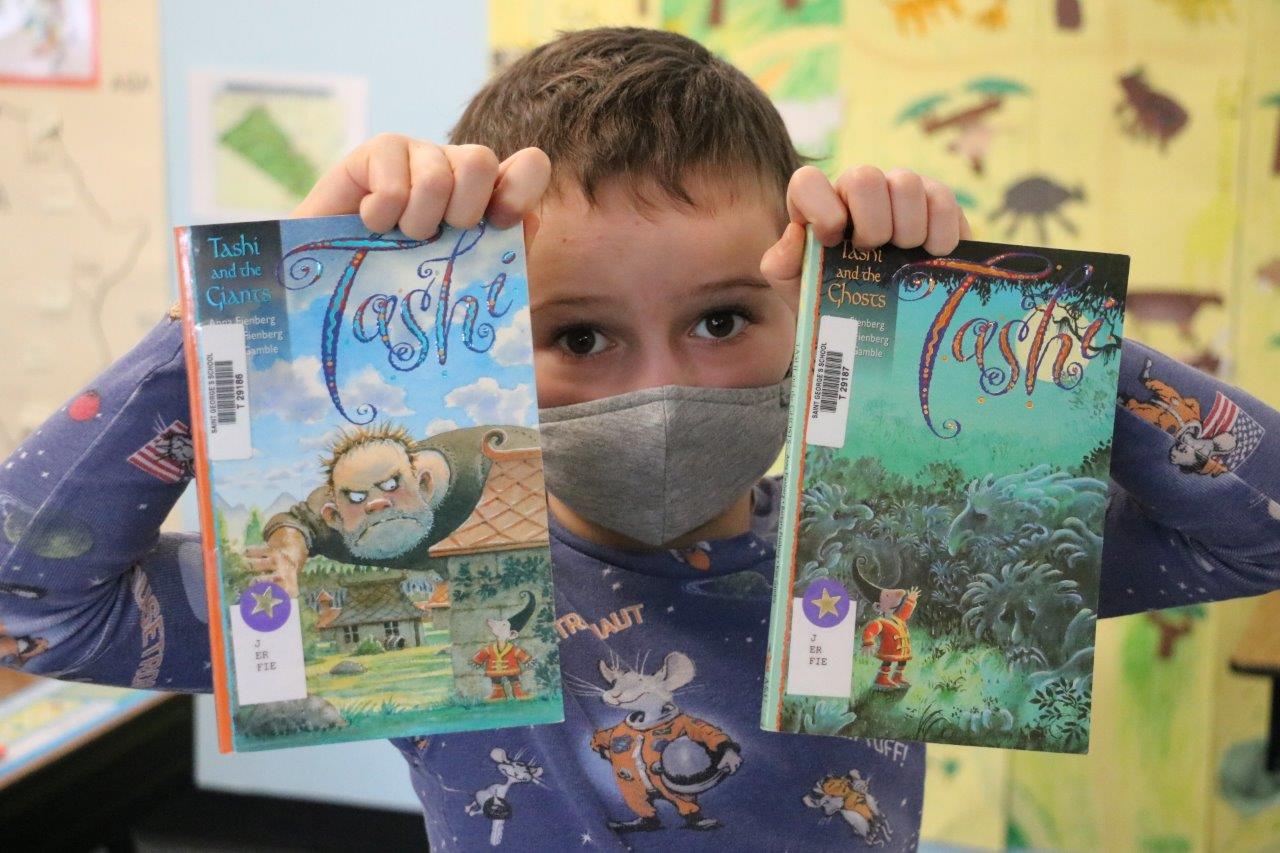
All of the Lower School celebrated 2021 Seconds of Reading on Jan. 8 by dressing in their pajamas and bringing their favorite books and stuffed animals to class. Unlike past years, the reading was done in their classrooms or from their homes. Some of the teachers and students also read books to their Distance Learning classmates who are at home. See photo galleries of the Kindergarten Readers, the 1st Grade Readers, the 2nd Grade Readers, the 3rd Grade Readers, the 4th Grade Readers, and the 5th Grade Readers!
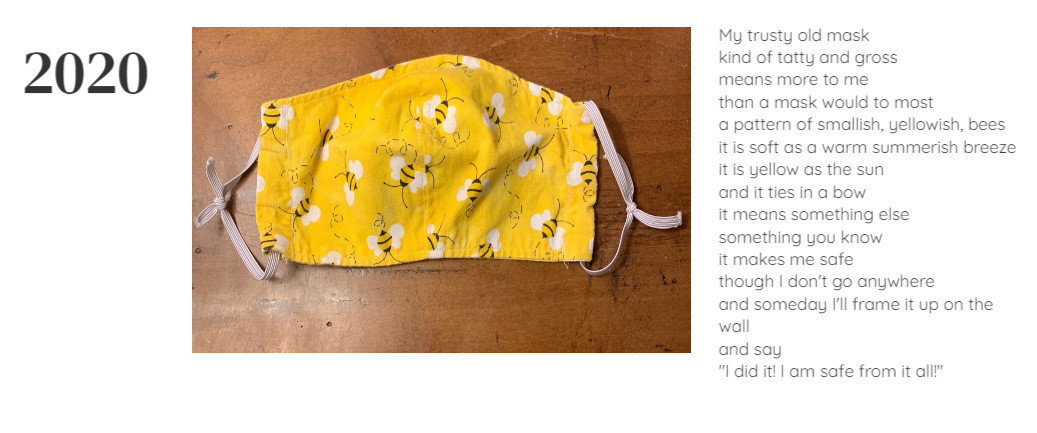
The 7th and 8th grade English students were asked to take a photo of an object that symbolized the year 2020 to them and write a poem about it. Here is a Photo Gallery of their thoughtful responses. They also were asked to photograph an object to symbolize the year 2021 and write a poem about it. Here is a Photo Gallery of their hopeful responses!
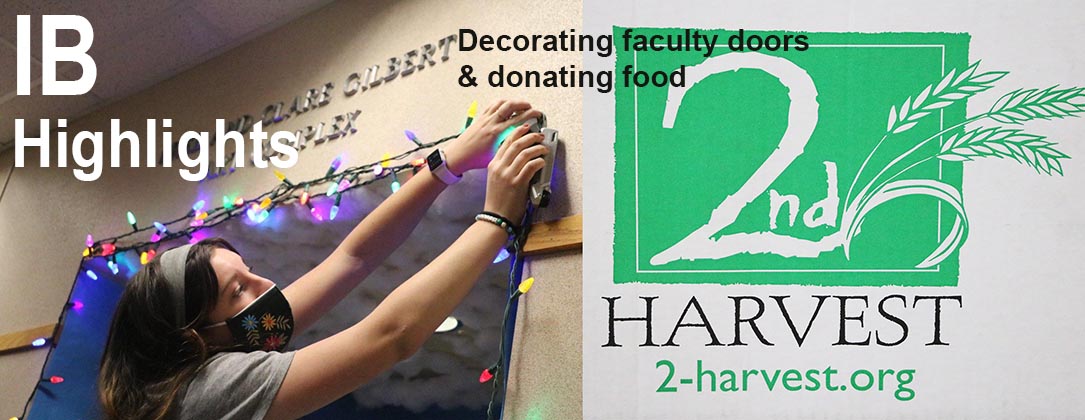
One aspect of the International Baccalaureate Diploma Programme is CAS (Creativity, Activity, Service). SGS Upper School students (in the US and in China) performed a wide variety of CAS experiences during the holiday break.
CAS Experience Highlights: Delivering cards and gifts to nurses, cleaning up their neighborhood, making a Cindy Lou, participating in Operation Christmas Smile, dog walking, learning breakdancing for fun, participating in the US door decorating, teaching themselves to play Stairway to Heaven, playing tennis, skiing at Silver Mountain, a week of exercising a dog, debate tournament, participating in the 2nd Harvest Food drive, making Christmas cookies for friends, picking chrysanthemums, visiting a Panda base, mentoring, making a grocery basket to donate, learning a new gymnastic drop using silks, wrapping gifts, decorating advisory doors, going to a barbershop and learning about a new culture.
IB Question of the Week: Are there any YouTube videos that help students/parents further understand the IB and also that help students navigate IB courses?
Yes, often times IB alumni will post YouTube videos, either explaining the IB or helping students with certain tactics they learned when taking certain courses and studying for exams. All ages can benefit from watching these videos because KNOWLEDGE IS POWER! Here are some relevant videos:
> Ivy Lilia’s video on “IB EXPLAINED | everything you NEED TO KNOW about IB” can be found here: https://youtu.be/6mRI6Mcp5hM. Ivy has lots of IB videos out there so check out her channel.
> One student who got a 45 (the highest score you can get) explains her top ten tips here: https://youtu.be/dk4y0jWdKgI
> Diana Ang gives her tips from “a realistic IB student” here: https://youtu.be/jq7ZGRbOxzw
IB Overview: The Diploma Programme (DP) curriculum for grades 11-12 is made up of six subject groups and the DP core, comprising Theory of Knowledge (TOK), Creativity, Activity, Service (CAS) and the Extended Essay (EE). Please refer to our IB webpage and to the IB Resources page in PowerSchool Learning for detailed IB information.
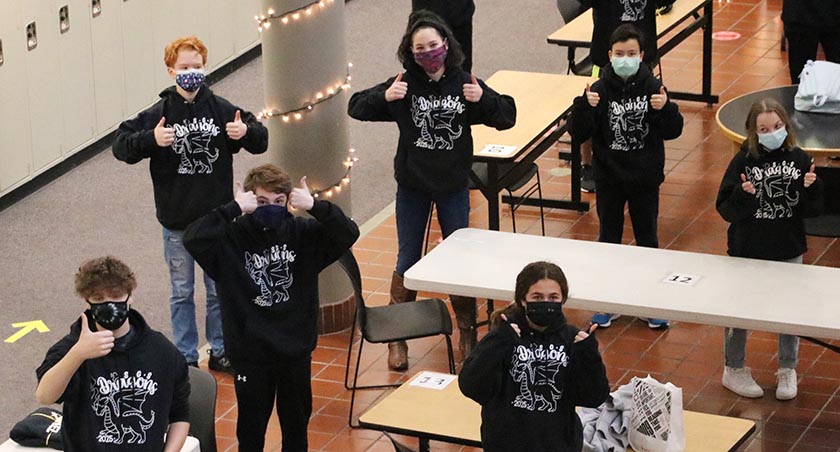
The members of the 8th grade received their own personalized SGS Dragons sweatshirt from one of the juniors or seniors (some of them older siblings) in a socially distanced event in the Upper School Courtyard just before Winter Break. Each of the older students also offered a piece of advice for success in the Upper School to the 8th graders. See a Photo Gallery of the ceremony and the entire Class of 2025 in their new sweatshirts!
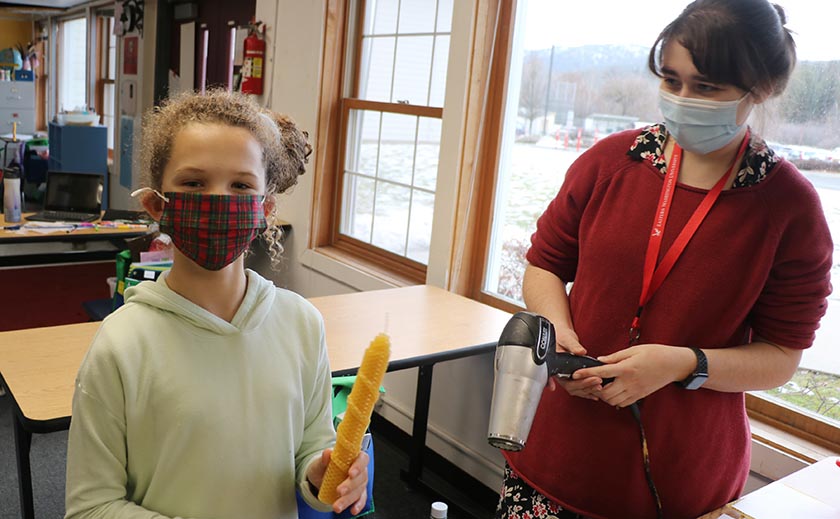
The fourth graders made beeswax “velas” (candles) after a week of learning about the traditional Christmas celebration of Las Posadas in Spanish class. See a Photo Gallery of the creative process and the final results.

Regulatory Oversight Update:
Spokane Regional Health District: The SRHD announced they will be updating their guidelines and processes related to “opening” schools. We hope to receive the updated guidelines during a meeting on December 30th. This could reflect new guidance from the Governor and the Washington DOH.
Governor Update: The Governor held a press conference on Wednesday as well as announcing new guidance on re-opening schools. https://www.governor.wa.gov/news-media/inslee-announces-updated-school-guidance-person-instruction . We will continue to review and comply with the guidance provided.
Operational Issues Update:
Since the school year began, Ryan Peplinski, COVID-19 Coordinator, has been communicating with families that have been impacted by COVID-19 in their family and then working with the SRHD team to assist with contact tracing. The SGS families have been very cooperative and proactive in notifying the school if they have come in close contact or if a family member has tested positive. This community effort strengthens our risk mitigation protocols in reducing the spread of COVID-19 if we have a case on campus. During break we ask you to continue to email with Ryan Peplinski if there are COVID-related illnesses to report!
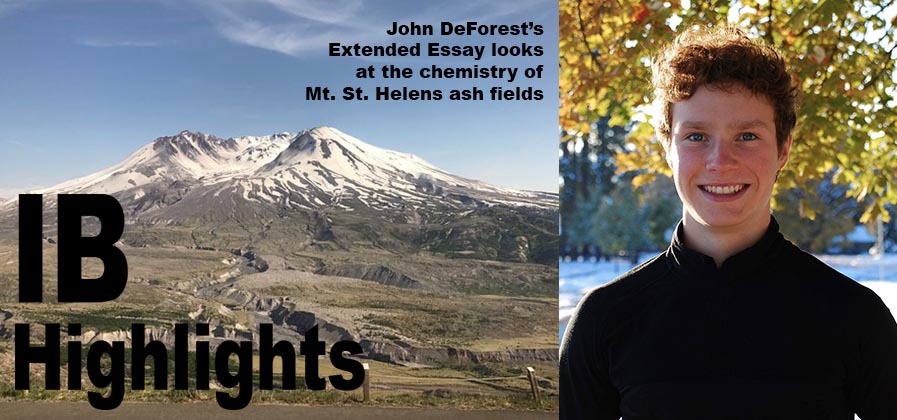
An SGS senior has used the International Baccalaureate Diploma Programme to explore a topic of particular interest to him -- heavy metal contamination.
EE highlight: Senior John DeForest chose to write his extended essay on a topic in Chemistry, a subject he is passionate about. His EE question is: How is the rate of diffusion of iron through hydrated sediments affected by the presence and properties of solid layers? His advisor, SGS chemistry/biology teacher Ian Townley, and partners at Kaiser Aluminum are helping him. What inspired John to pick this topic? “I read an article in a local online newspaper about heavy metal contamination in nearby Lake Coeur d' Alene -- scientists were concerned about rising fertilizer runoff into the lake and surrounding tributaries causing heavy metals from decades of mine tailings to release from their resting place in the sediment. Nowhere in the article did it mention just how fertilizer was causing the heavy metals to leach out, and I was intrigued by this. Thus began a long process of digging through the literature, calling local tribes and researchers, and connecting with local manufacturing companies to find answers."
"I discovered that it was more of a biological process than a chemical one," John says. "Bacteria eat the iron that stores the heavy metals, releasing them into the sediment and water column. I reassessed with my advisor and decided that the release process was too complex in both scope and equipment, so I turned to a different factor that affects heavy metal release. Layers of ash from the Mt. St. Helens eruption appear to have blocked the movement of heavy metals complexed in the iron (which would prevent them moving to areas with bacteria). So I am designing an experiment to discern the chemical and physical properties of sediment layers that block this process.”
Once again, we love to see how the process of choosing a topic comes to be and evolves with research. We cannot wait to read this full EE in January.
CAS Project Highlight: Five graduates from the DP program, in places spread all over the world, reflect on the values and benefits of CAS in this article: https://blogs.ibo.org/blog/2019/11/01/cas-service-benefits/
CAS Experiences Highlights: CAS experiences for all of our Upper School students (in the US and in China) this week included participating in the mentor program, making videos for Lower School students, raking leaves for the Ronald McDonald House, making cards for the police and sheriffs, cleaning up a yard for a cancer patient, creating flyers, skiing, adopted family Christmas shopping, taking a CPR, BLS and First Aid class, curating a cheese board, tutoring,
IB Question of the Week: Why is it important to choose an extended essay topic that a student is passionate about?
DP graduate Stephanie Stan, from Bloomfield Hills High School, offers her advice on how to make the extended essay transform from just an assignment to a project that expands upon your own knowledge of a topic. See her article here: https://blogs.ibo.org/blog/2018/05/02/extended-essay-topic/
IB Overview: The Diploma Programme (DP) curriculum for grades 11-12 is made up of six subject groups and the DP core, comprising Theory of Knowledge (TOK), Creativity, Activity, Service (CAS) and the Extended Essay (EE). Please refer to our IB webpage and to the IB Resources page in PowerSchool Learning for detailed IB information.
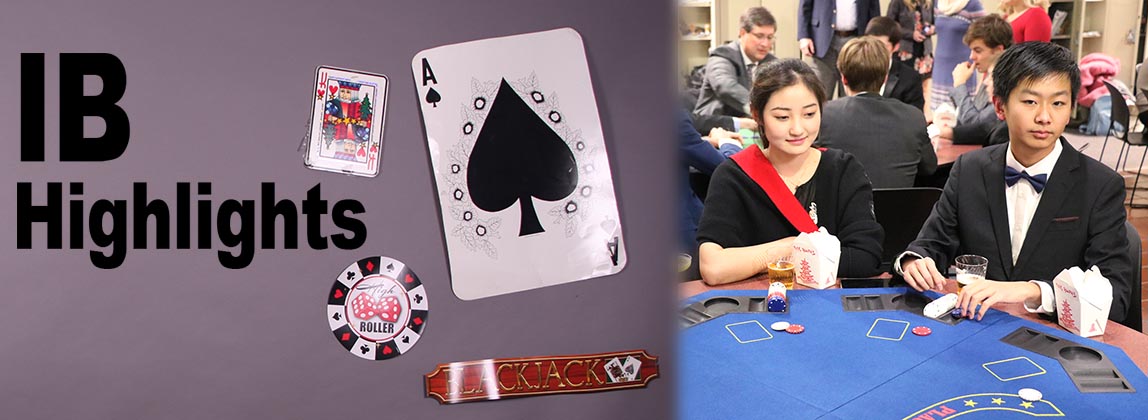
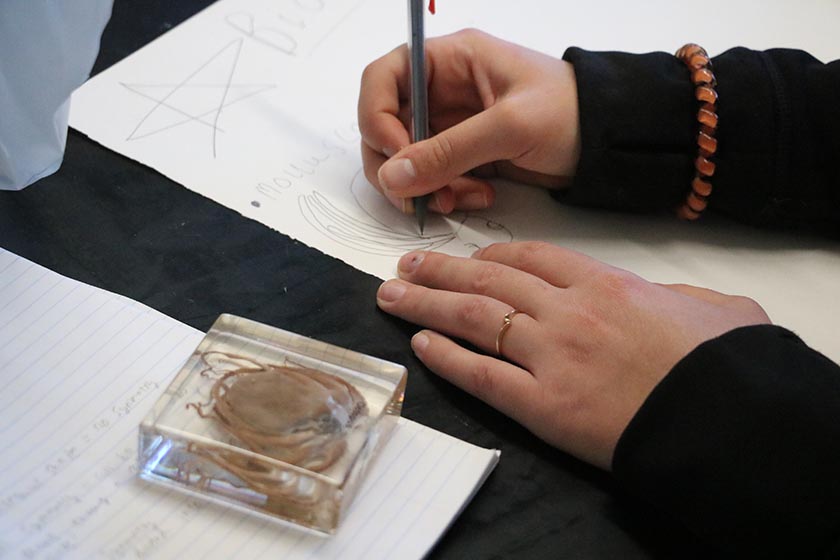
Seniors spent time in the Biology Lab learning the different orders of life forms by taking photos or drawing examples from bugs to birds to mammals. See a Photo Gallery of them pulling together images of a variety of creatures.
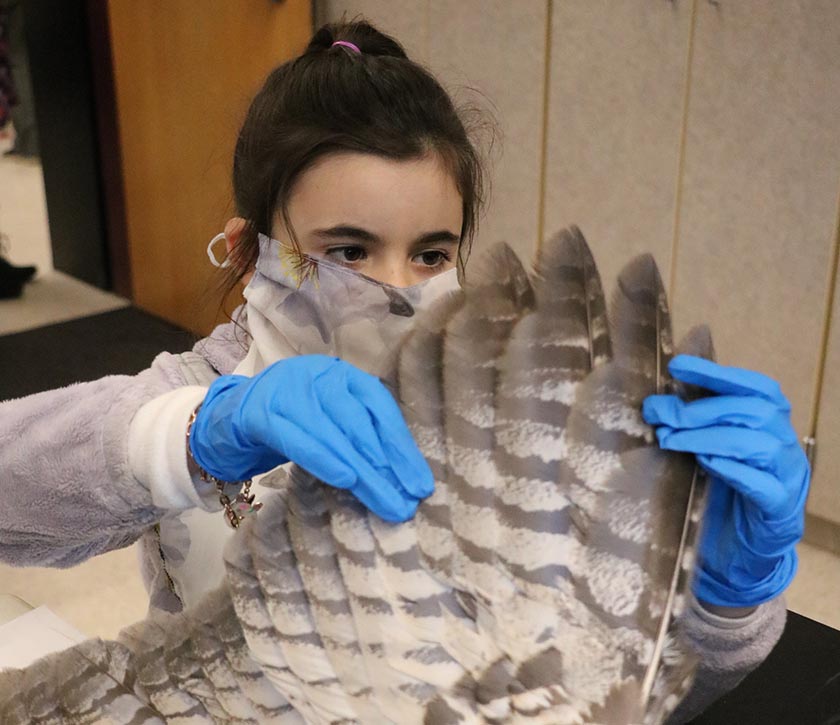
The 2nd graders have been learning about owls. So when Biology teacher Seth Coleman discovered a Great Horned Owl that had died after getting caught in the baseball outfield net, the class came to the Bio Lab to check it out. See a Photo Gallery of the students examining how a real owl's feathers, claws, eyes and ears make it such a successful hunter.
Latest News | Page 2 | Page 3 | Page 4 | Page 5 | Page 6 | Page 7 | Page 8 | Page 9 | Page 10 | Page 11 | Page 12 | Page 13 | Page 14 | Page 15 | Page 16 | Page 17 | Page 18 | Page 19 | Page 20 | Page 21 | Page 22 | Page 23 | Page 24 | Page 25 | Page 26 | Page 27 | Page 28 | Page 29 | Page 30 | Page 31 | Page 32 | Page 33 | Page 34 | Page 35 | Page 36 | Page 37 | Page 38 | Page 39 | Page 40 | Page 41 | Page 42 | Page 43 | Page 44 | Page 45 | Page 46 | Page 47 | Page 48 | Page 49 | Page 50 | Page 51 | Page 52 | Page 53 | Page 54 | Page 55 | Page 56 | Page 57 | Page 58